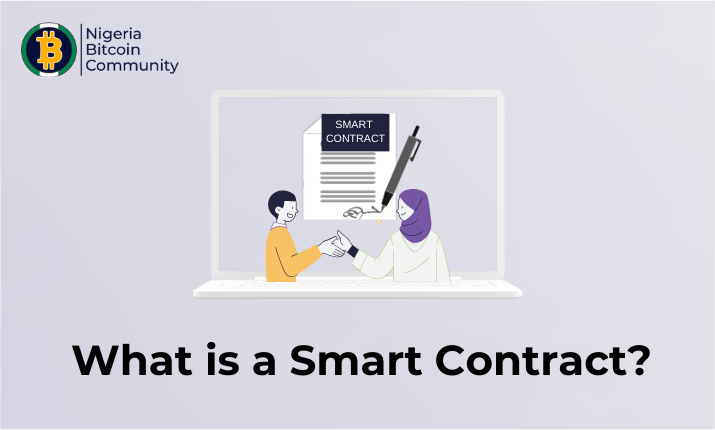Under review today are Smart Contracts – what they are and their characteristics.
As the name implies, these are ‘contracts that are smart’ and are used in almost every crypto project.
You will find how this works and the rest of the details in the subsequent subheadings.
Let’s get started.
What Are Smart Contracts?
As mentioned earlier, Smart Contracts translate to ‘contracts that are smart’.
This is what I mean:
According to the Oxford Dictionary,
A contract is a legal agreement between two or more parties, specifying the actions to be taken and payments to be made by each party.
The problem with this is that the parties involved in the agreement can default.
They may choose not to hold up their own end of the contract, thus requiring a third party to enforce it.
The third-party can be lawyers, police, banks, the government, etc., and they can be expensive.
What a smart contract does is that it removes the middleman.
So:
A Smart Contract is a contract that ensures that when certain conditions are met, things happen automatically.
As such, there is no need for a middleman to follow up on the conditions.
Smart contracts are made possible because of the blockchain.
You know what? Let me give you an example.
Let’s say a boxing match is fixed between Francis Nganu and Deontay Wilder. Or Jake Paul and Mike Tyson.
That would be an exciting match.
Who do you think will emerge victorious in this match?
Let’s stick with Francis Nganu and Deontay Wilder.
Say I and my friend Ben decide to bet $1000 each against each other in this match.
My support is for Nganu, and he is for Wilder.
There are 3 possible ways we can carry it out:
- We agree the winner pays the loser. But I might default if I lose, and he might also default if he loses.
- We employ the services of Mike as the middleman. We both give him our $1,000, and he will pay the winner the total sum. We will have to pay Mike a percentage of the money, maybe 10%, for his service, but Mike may also choose to default and scale with our money.
- We use a smart contract. We write the contract and deploy it on Ethereum. Then send our $1,000 each to the contract. This contract will execute automatically when the conditions are met. If Nganu wins, it will send $2,000 to my wallet. If Wilder wins, it will send $2,000 to Ben’s wallet. If the match were a tie, it would return our initial $1,000 wager.
We don’t need to trust the smart contract because it will work whether we trust it or not, according to how it was programmed.
You may ask:
What makes Smart Contracts unique, and why should we accept that they would work and not be tampered with?
The simple answer: Immutability!
Because smart contracts are built on the blockchain, they are immutable.
Immutable means “Can’t be changed.”
Once a Smart Contract is deployed on the blockchain, it becomes fixed and permanent, and no one, not even the creator, can change it.
This ensures that no one can change the agreement or manipulate it.
But do Smart Contracts have limitations?
Let’s discuss that below.

Do Smart Contracts Have Limitations?
The fact that Smart Contracts are immutable is a good thing.
However, it also comes as a risk.
If there are any mistakes in the Smart Contract code, they stay that way and can’t be changed forever.
And this can be exploited by hackers.
Another limitation of Smart Contracts is that all contracts cannot be digitized and put on the blockchain.
The boxing example I gave earlier is only possible because of oracles.
Oracles like Chainlink take real-world data and feed it to the blockchain.
Read more: What are Blockchain Oracles? – All You Need to Know
There is a wide variety of Smart Contract applications, and the more things are digitized, the more applications there are.
The most notable application of Smart Contracts is creating Decentralized applications, a.k.a. dApps.
dApps are applications on the blockchain that any person or organization does not control.
Smart Contracts were first deployed on the Ethereum blockchain and have been used to create decentralized applications, including Uniswap, DYDX, Aave, and many more.
Conclusion
This is where we end today’s post. Hope it was worth your time.
If you want to learn more about blockchain and its opportunities, keep reading our blog, where we keep you updated with the latest information in the crypto space.
Also, you can sign up at Afibie Crypto Learning School to learn how to trade cryptocurrencies profitably.
Create a Bybit account and join our community on Telegram.
See you there and in my next post!



0 Comments